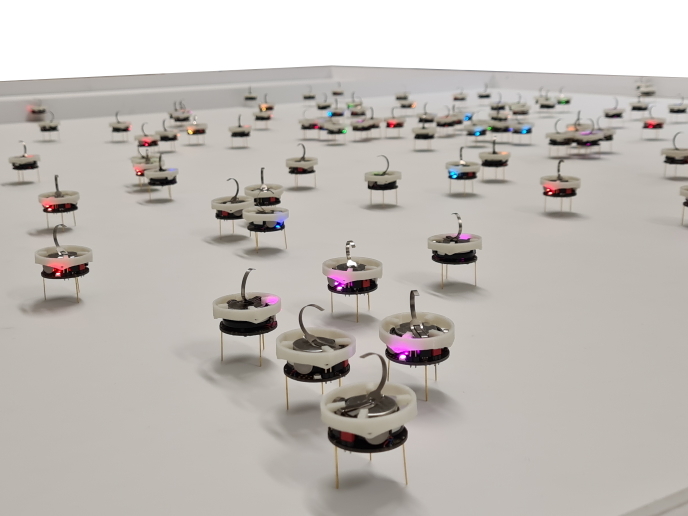How honeybees can help swarm robots – and us – make better decisions
In order to operate effectively, swarms of automated robots need to share information among themselves and come to a decision on what to do. The EU-funded DiODe project sought to uncover universal truths about the architecture of this deliberative process. “Our goal was to find out how groups can make decisions in the best possible manner,” says project coordinator James Marshall, professor of Theoretical and Computational Biology at the University of Sheffield. His team drew from neuroscience, decision theory, mathematics, political science and psychology in their investigations. “The motivation for this approach is that lots of swarm robots work with heuristics that are ad hoc, using little tricks,” he explains. “For swarm robots to become a respectable tech worth deploying, we need to reason more as to how the group will behave.”
Quorum sensing
A major result was identifying what voting threshold should be used for making a decision. “In political science it’s often assumed you should use a simple majority threshold, with the Condorcet Jury Theorem stating that the more group members you have, the better decisions you get,” adds Marshall. “We showed there’s more nuance to it.” Borrowing from signal detection theory, Marshall and his team demonstrated that apparently binary decisions, such as a swarm of bees deciding if a location is a good nesting site or not, are more complex, as they carry the risk of both false negatives and false positives. “When we consider this nuance, the optimal quorum levels needed in a group change, and can be supermajority or sub-majority depending on things such as the relative costs of the different kinds of error,” he notes. Marshall says that in nature, decisions are typically based on quorum sensing rather than a supermajority, triggering a decision when a certain threshold is reached. “We found a beautiful mathematical structure in this space, it was the most aesthetic mathematical moment in my career,” he adds. Another distinction Marshall notes is that while human democracies tend to vote in a decisive act, in nature decisions are shaped more gradually, with new information constantly being fed in. “With a swarm, it’s not a single vote but an ongoing process, where the bees influence one another during the vote, and bees will inhibit competitor bees.”
Wisdom of the crowd
Marshall's team conducted further research which aimed to identify the optimal way of balancing the time it takes to reach a decision with the value arising from that decision, two critical factors for the efficient operation of drone robots. The project was supported by the European Research Council. “This enabled me to establish a long-term team that collected expertise together,” says Marshall. “It was an opportunity to focus on these issues over a long enough time to make coherent progress.” The group’s findings have now been made available in a web portal, so that other researchers can test ideas in model organisms. They will also feed into a spin-out company headed by Marshall, Opteran Technologies, which aims to encode animal-like brains in silicon for automated machines.
Keywords
DiODe, decision, automated, distributed, Condorcet, jury, democracies, swarm, mathematical

